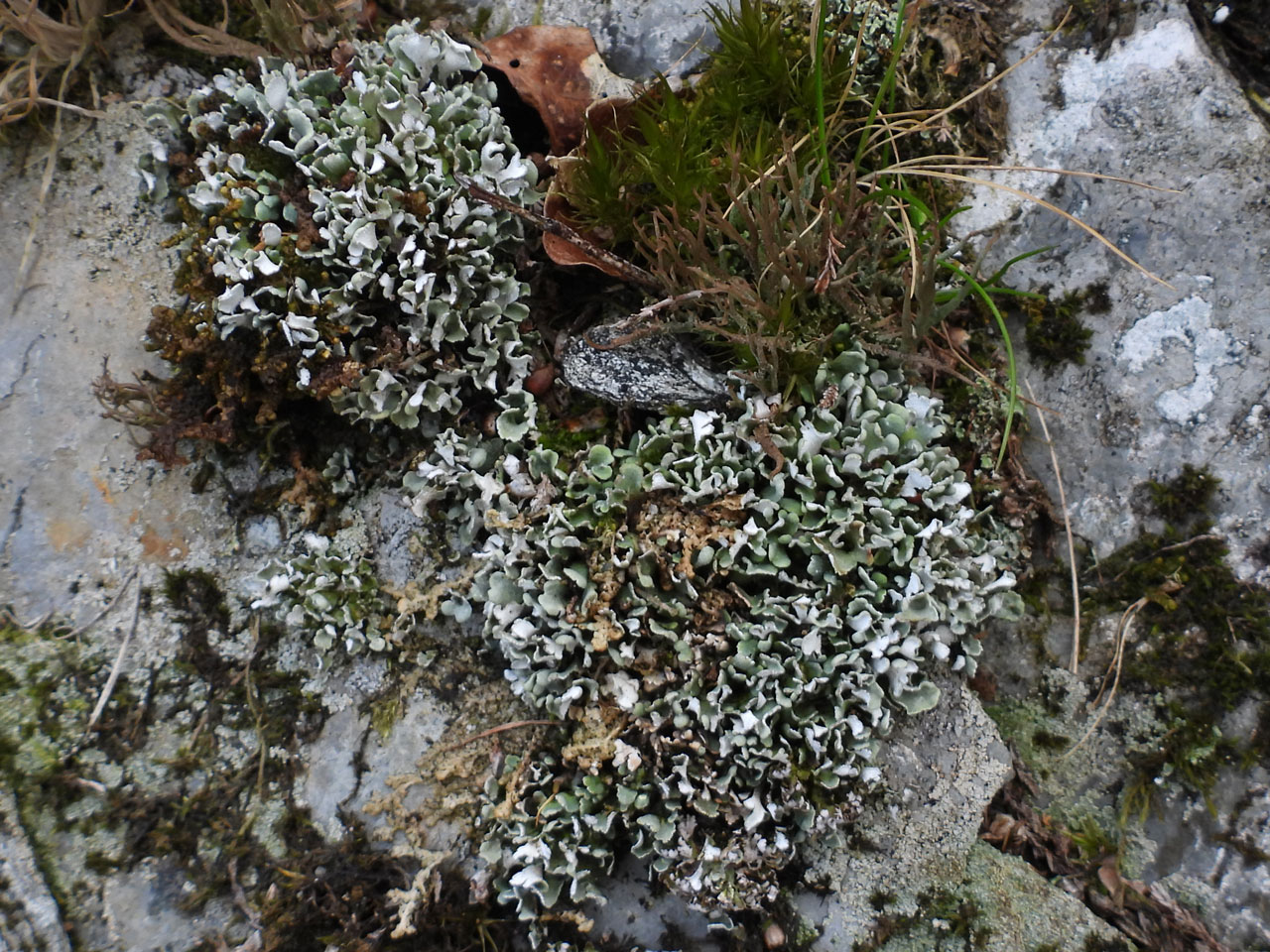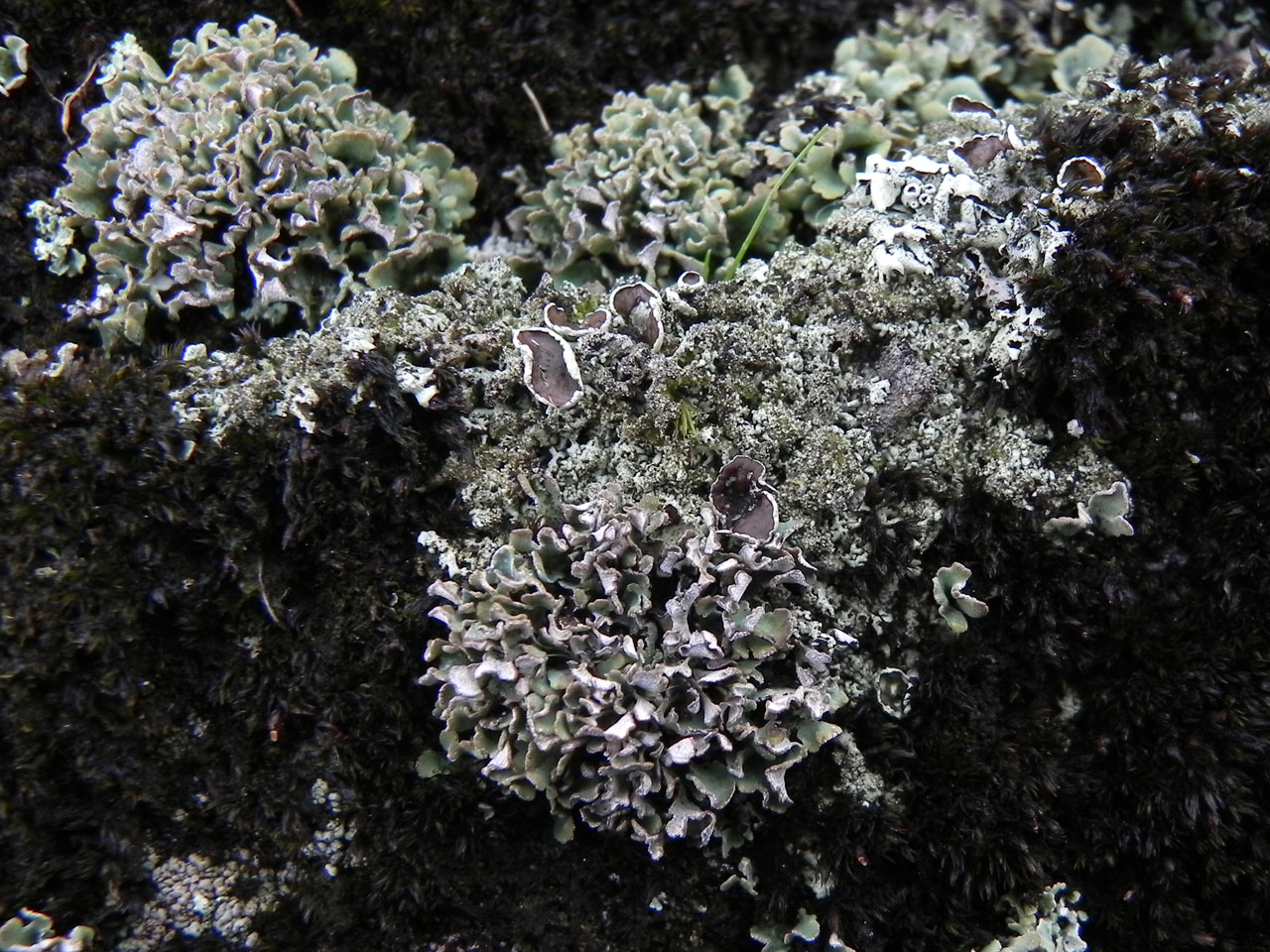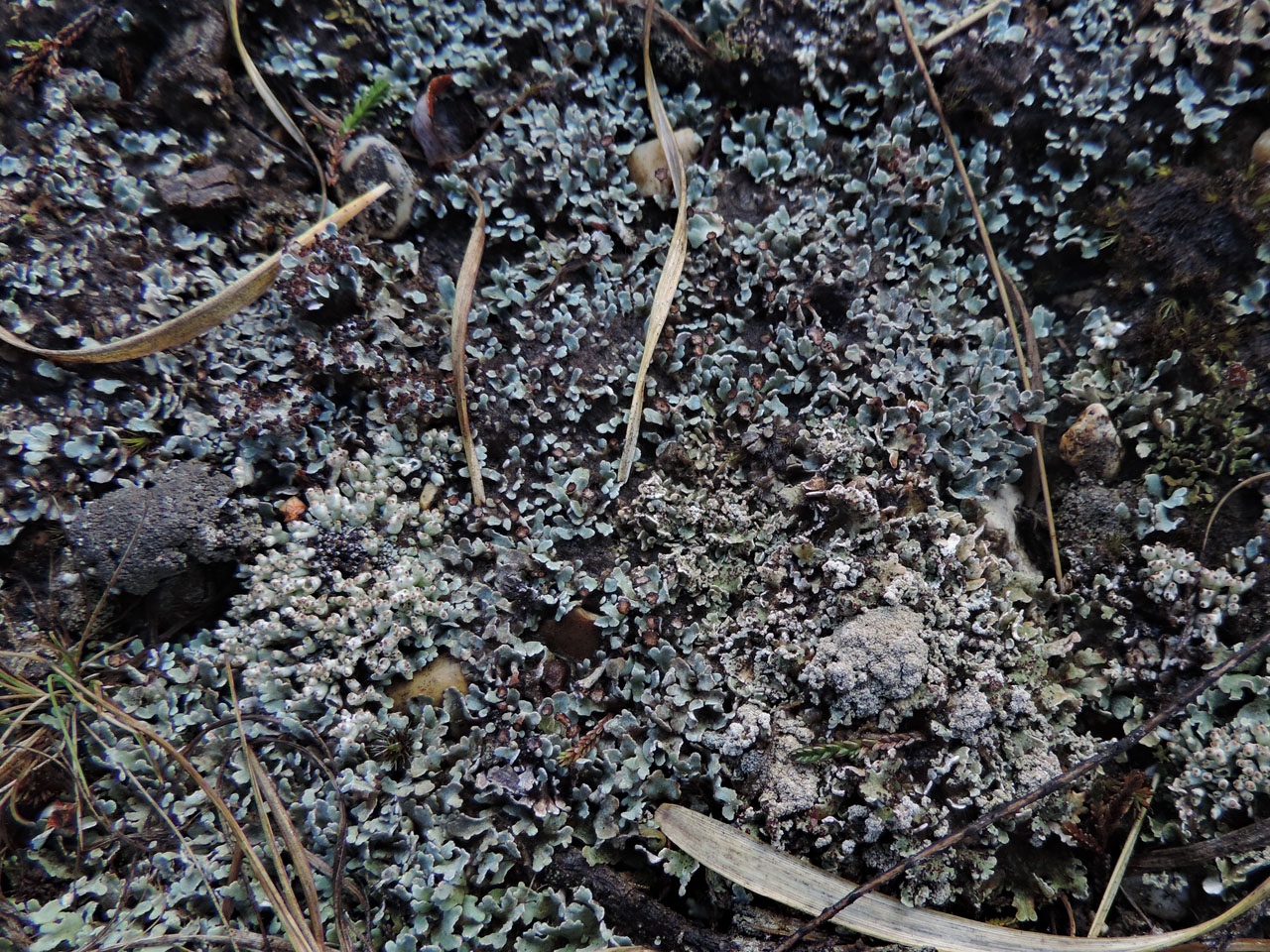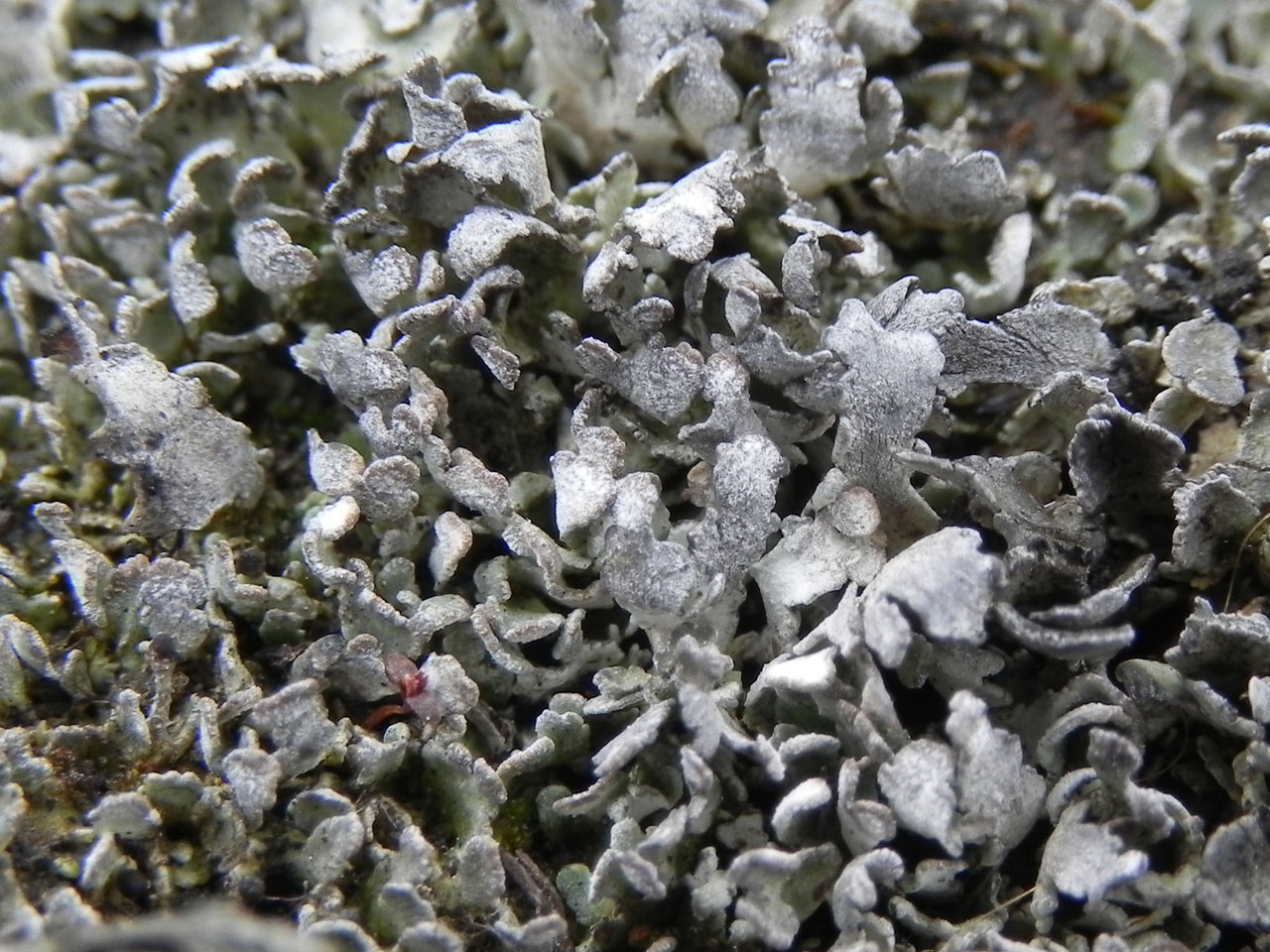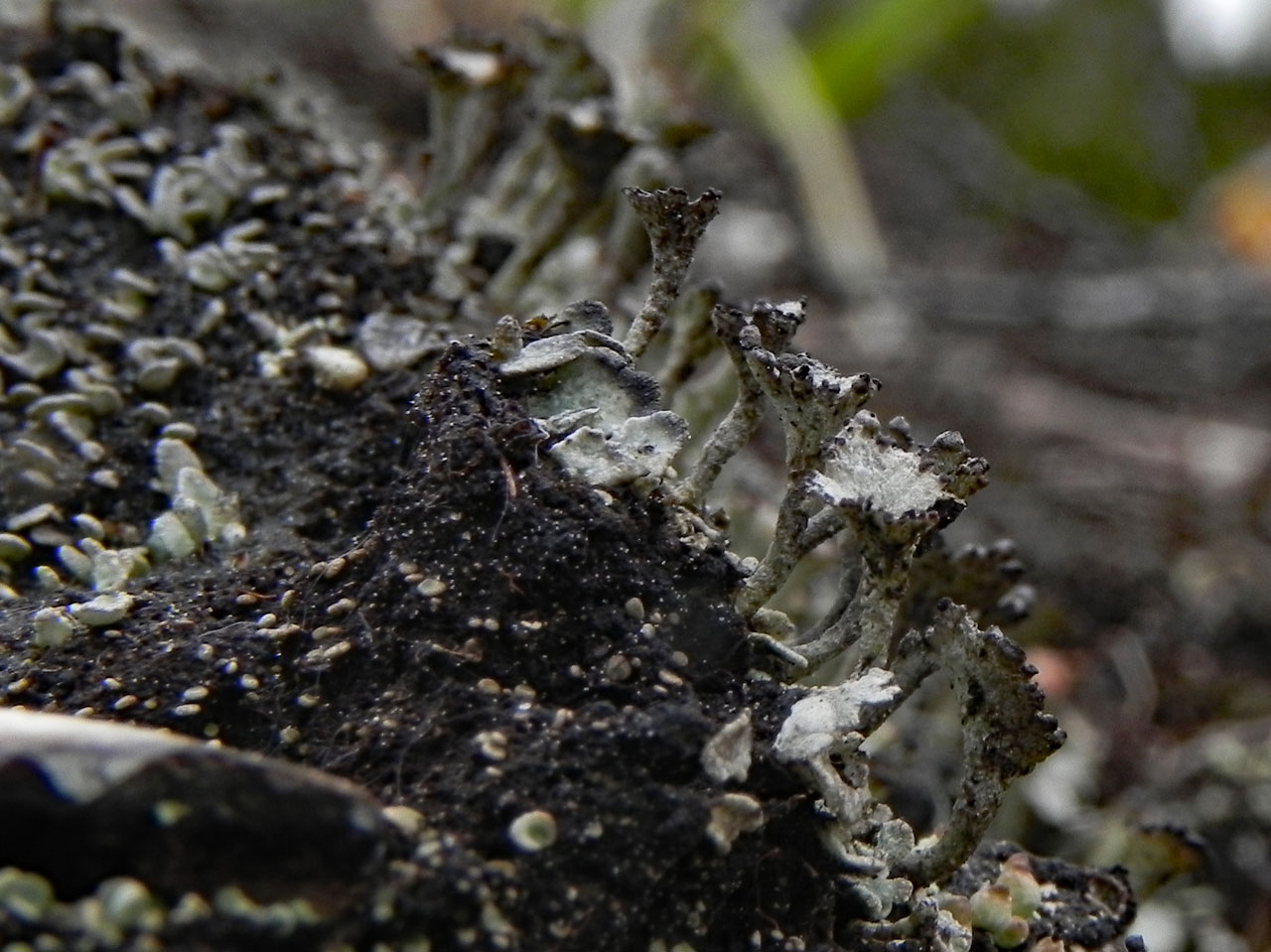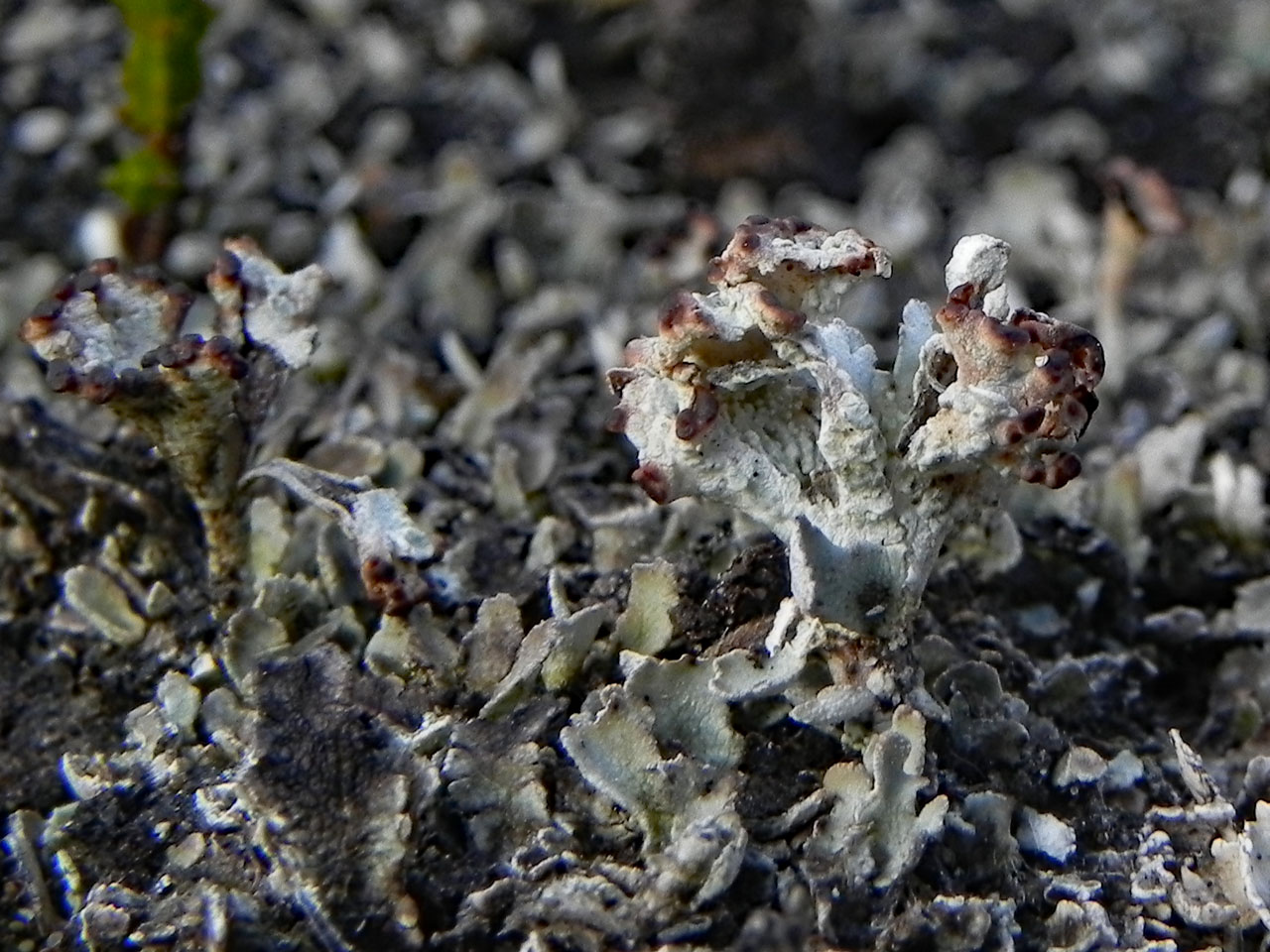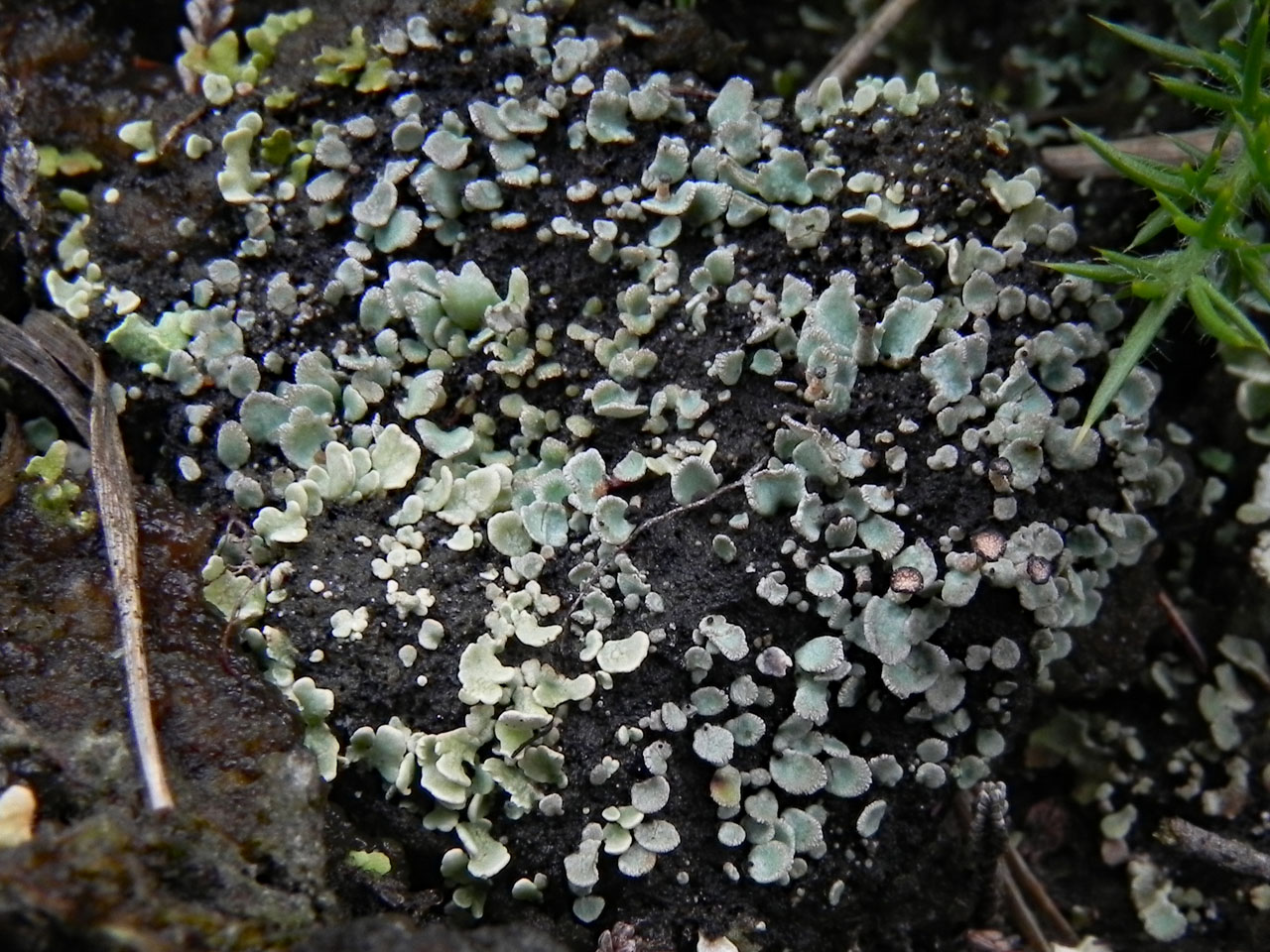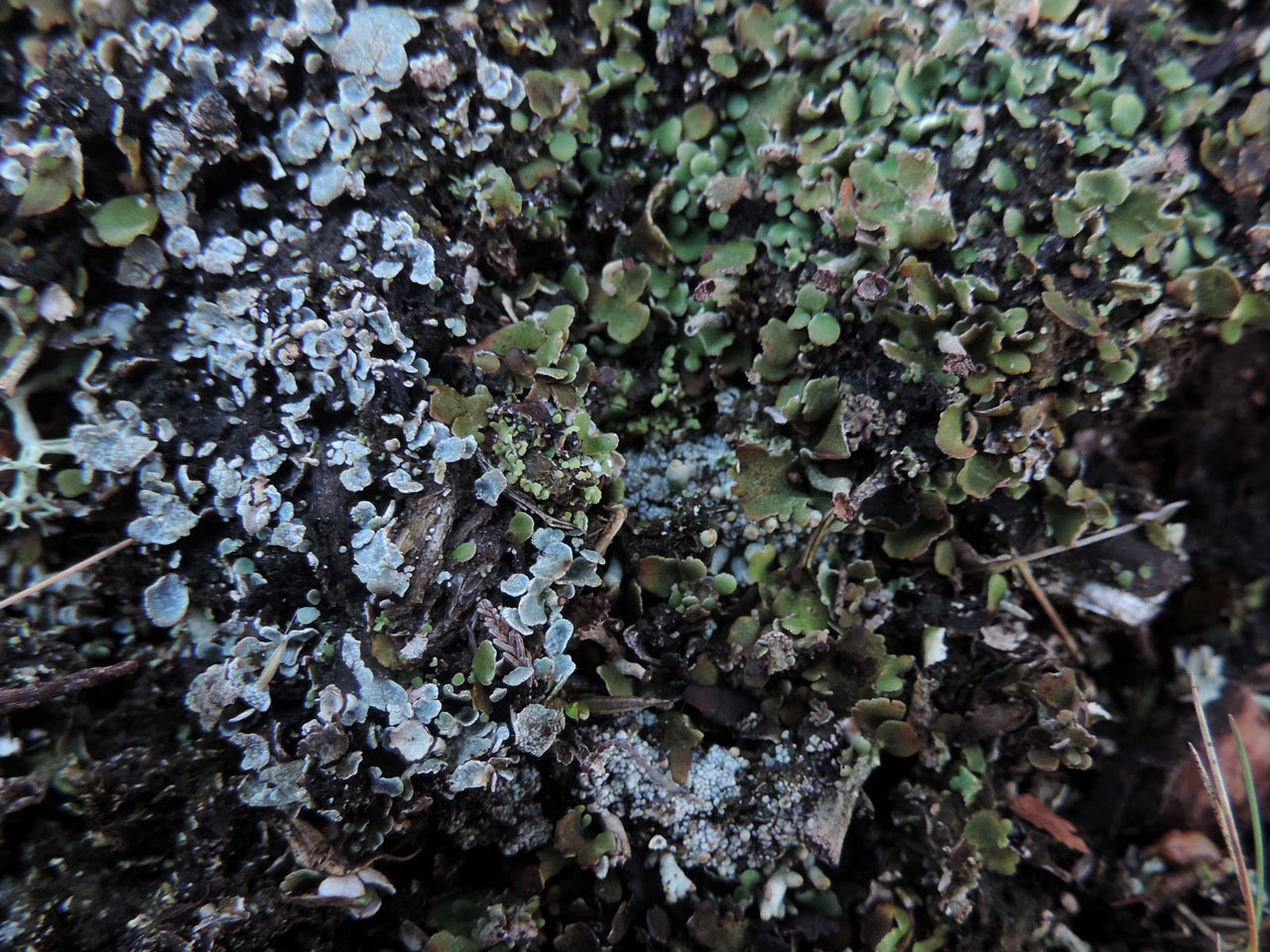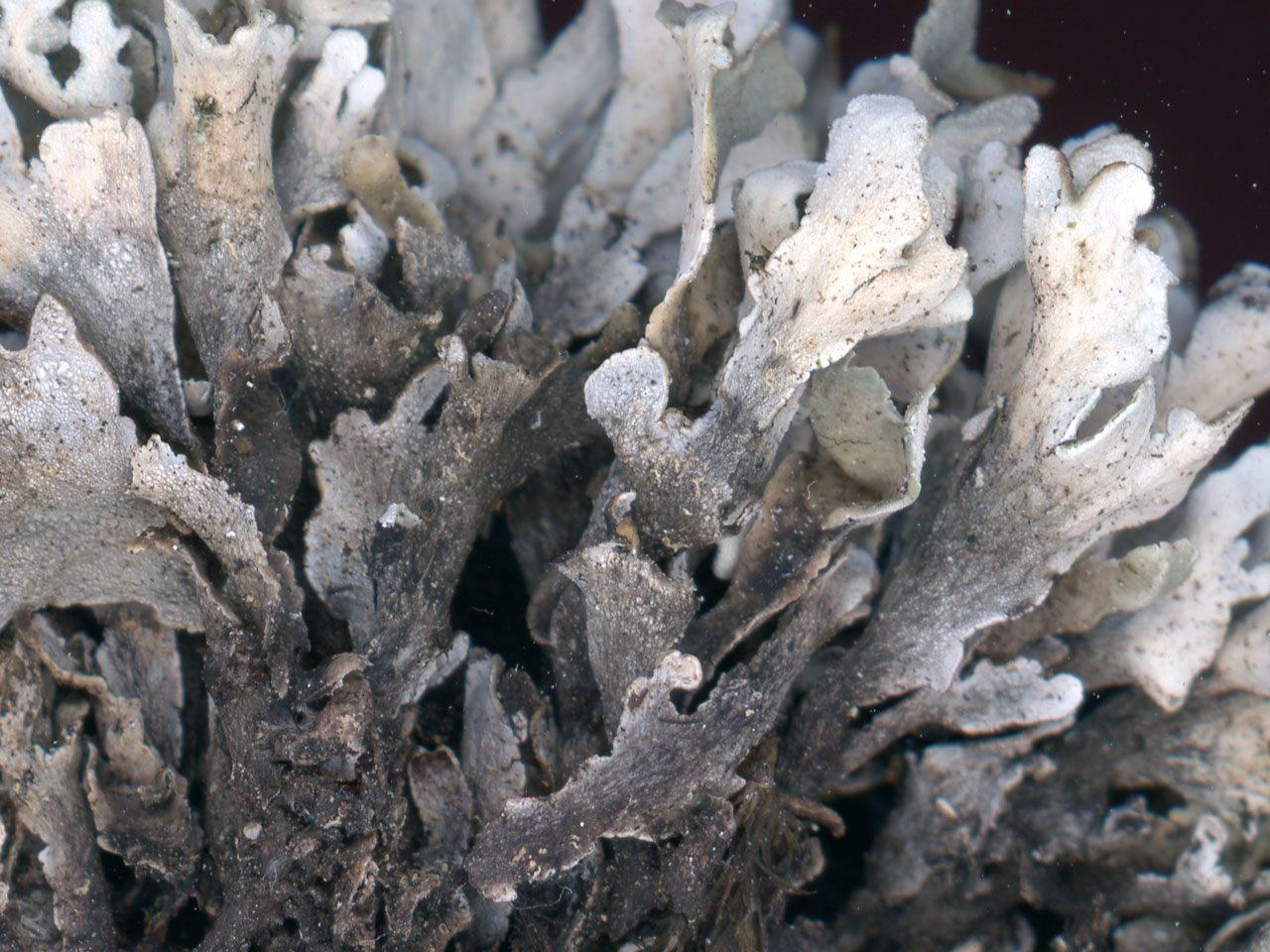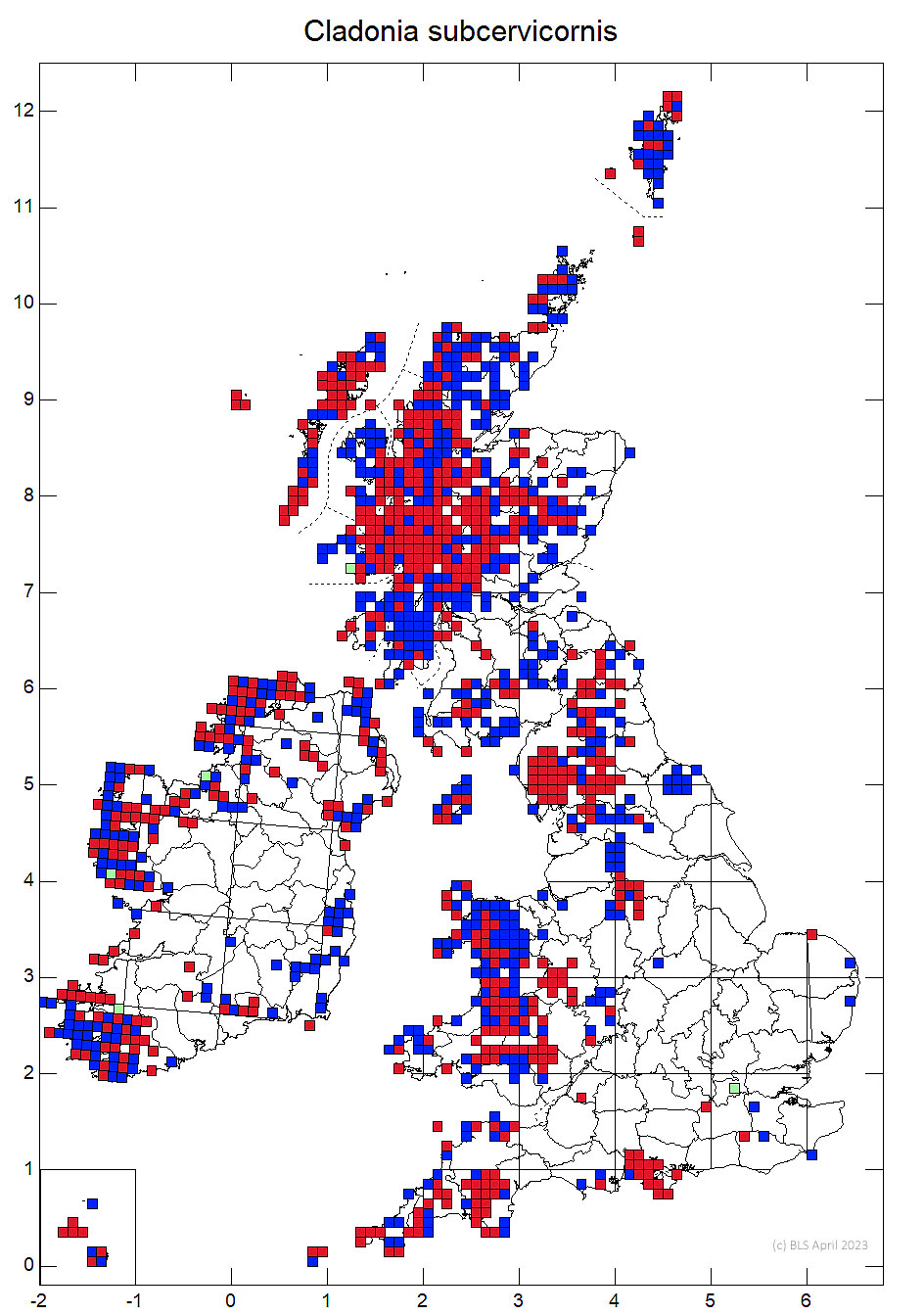Cladonia subcervicornis
A Cladonia that usually occurs as sterile squamule mats, with the large basal squamules dominant, elongate, with slightly indented margins, forming ± compact interlocking cushions; upper surface bluish (wet) to lead-grey (dry), usually pruinose at the tips; lower surface white, usually ± blackened towards the base. Very characteristic of thin humus on rocks, particularly pockets in crevices on acid rocks, but also on open humus in low productivity moorland. Common in the uplands, but rare and declining in the southern lowlands, but still frequent in heathland in the New Forest.
Podetia to 1.5 cm tall, rather rare, with irregular or deformed turgid cups, flared from the base, bearing squamules, often irregularly proliferating from rim. Basal squamules dominant, elongate, 0.5–2 cm long, ± erect, with indented margins, mostly contiguous and forming ± compact interlocking cushions; upper surface bluish or lead-grey, usually pruinose at the tips; lower surface white, usually ± blackened towards the base. Apothecia small, dark brown, on the rim of scyphi, often becoming clustered, rather frequent. Pycnidia dark brown, on the rim of scyphi. Thallus C–, K+ yellow, KC–, Pd+ red, UV– (fumarprotocetraric acid, atranorin).
Part of clade Cladonia subclade Firmae along with C. firma, which is similar but has squamules that are brownish below and lack a bluish tinge on the upper surface, they occasionally grow together in lowland heaths.
Cladonia cervicornis has smaller, less elongate basal squamules, a grey-green upper surface that is not blackened toward the base, has more regular podetia, and is K–. C. symphycarpa, is characteristic of limestone and basic dune systems, not the acid habitats of C. subcervicornis, and usually contains norstictic acid (K+ yellow to red). The atranorin can be difficult to detect in C. subcervicornis using the K+ yellow test but when in low concentration the K/UV (dry)+ vivid neon yellow test can be used.
On humus, particularly pockets in crevices on acid rocks and boulders on moorlands and woodlands in coastal and montane sites, also forming mats on peaty soils in moorland and lowland heathland, it had been overlooked in the latter habitat until recently. Tolerant of cool controlled burns in damp moorland and heathland and probably at least partly dependant on this management to maintain suitable open habitats.

N. & W. Britain and upland Ireland, where it is common, extending locally eastwards and southwards. Frequent in the New Forest, but rare in the rest of lowlands England.
In lowland England it is rare and declining outside of the New Forest, due to habitat loss and shading from vegetation overgrowth from the decline or cessation of extensive grazing and controlled burning in lowland heathlands.
Pino-Bodas, R., Sanderson, N., Cannon, P., Aptroot, A., Coppins, B., Orange, A. & Simkin, J. (2021). Lecanorales: Cladoniaceae, including the genera Cladonia, Pilophorus and Pycnothelia. Revisions of British and Irish Lichens 19: 1-45. Link
Sanderson, N. A. (2016) The New Forest Heathland Lichen Survey 2011 – 2015. A report by Botanical Survey & Assessment to Natural England, Forest Enterprise & The National Trust. Link
Text Neil A Sanderson, based Pino-Bodas et al (2021)
